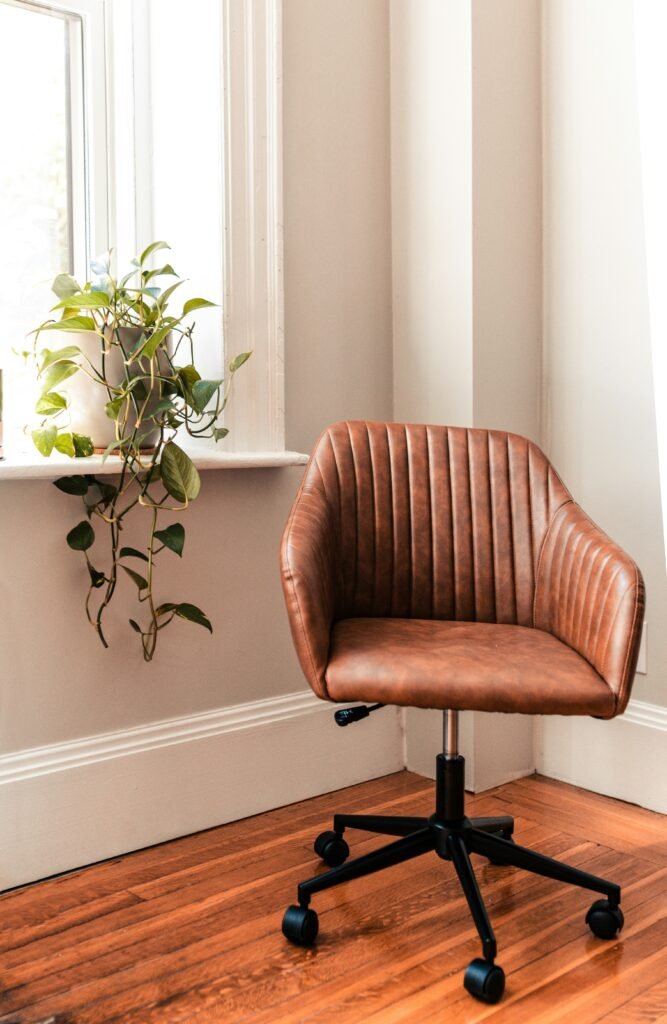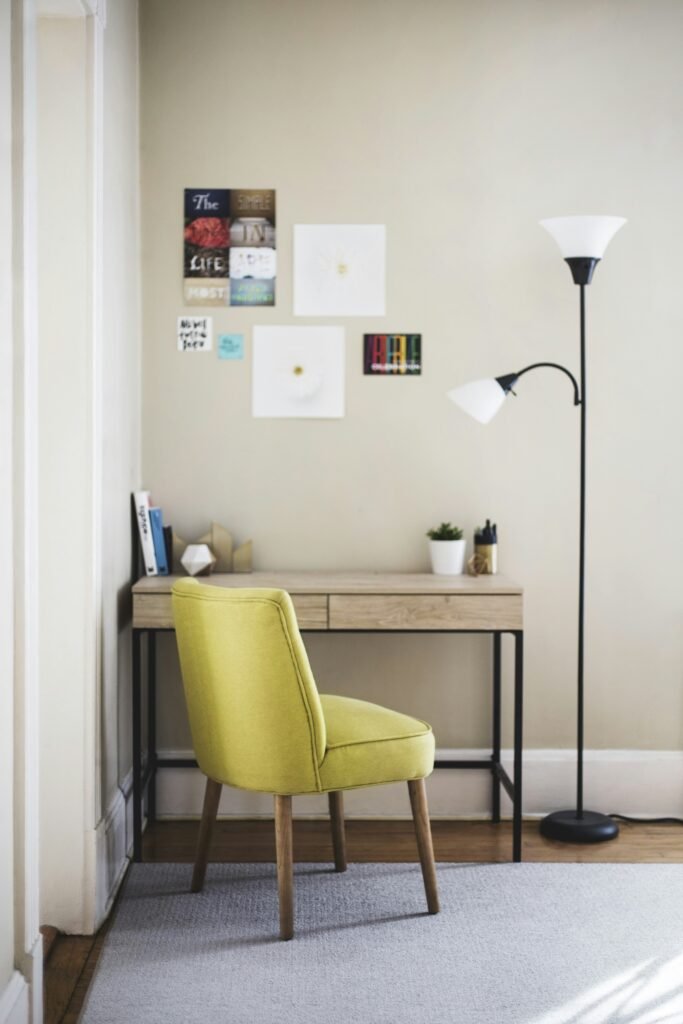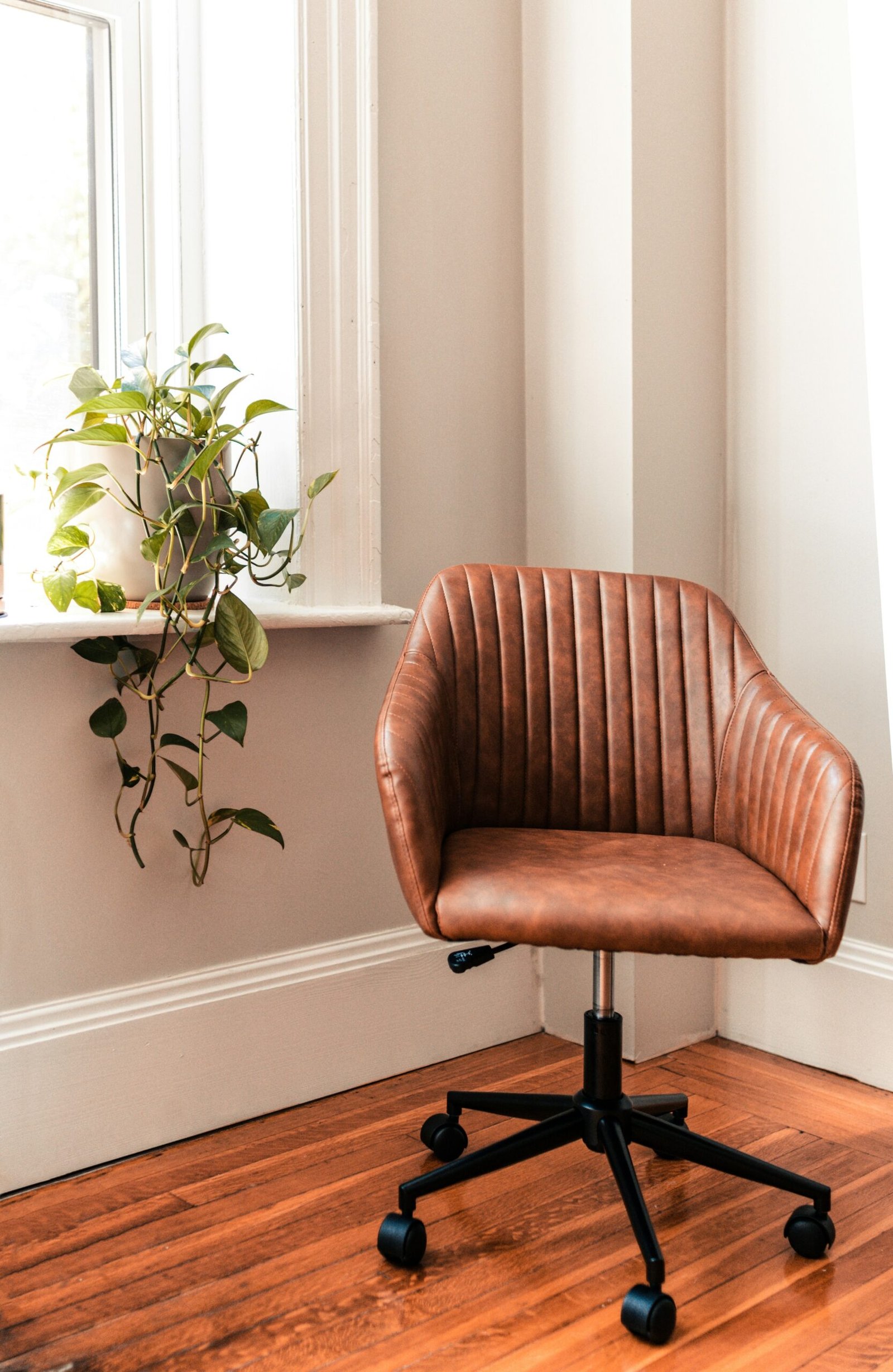Taking care of your chairs not only ensures their long-lasting durability but also enhances the overall aesthetic of your space. Whether you have wooden, metal, or upholstered chairs, regular maintenance is key to maintaining their quality and appearance. From simple cleaning routines to preventive measures, this article provides essential tips and techniques to effectively care for your chairs, ensuring they stand the test of time.
Inspect Chairs Regularly
Regularly inspecting your chairs is an essential part of maintaining their durability and longevity. By taking the time to inspect your chairs, you can identify any potential issues before they become major problems. Here are some important areas to check during your inspections:

This image is property of images.unsplash.com.
Check for loose screws or bolts
Loose screws or bolts can not only affect the stability of your chairs but also pose a safety risk. Take a moment to inspect the various parts of your chairs for any signs of looseness. Use a screwdriver or wrench to tighten any loose screws or bolts you come across. By doing so, you can ensure that your chairs remain sturdy and secure.
Look for signs of wear or damage
Over time, chairs can experience wear and tear due to regular use. It’s essential to keep an eye out for any signs of damage such as cracks, chips, or breaks in the chair’s structure. Additionally, pay attention to the condition of the upholstery or cushions. If you notice any fraying or tears, it’s important to address them promptly to prevent further damage.
Test the stability of the chair
To ensure the safety and comfort of anyone using the chair, it’s crucial to test its stability. Sit on the chair and gently lean from side to side or back and forth to see if it wobbles or feels unstable. If you notice any instability, it may be a sign that further inspection or repairs are needed. Addressing these stability issues early on can help prevent accidents or injuries.
Clean Chairs Properly
Proper cleaning is vital to maintain the appearance and functionality of your chairs. By following a few simple guidelines, you can keep your chairs looking clean and fresh for years to come. Here’s what you need to know:
Use appropriate cleaning products
When it comes to cleaning chairs, it’s important to use the right cleaning products for the job. Different materials require different cleaning methods and solutions. Always refer to the manufacturer’s recommendations for the best cleaning practices. If in doubt, opt for mild, non-abrasive cleaners that are suitable for a wide range of chair materials.
Follow manufacturer’s instructions
Each chair comes with specific care instructions provided by the manufacturer. These instructions often outline the best cleaning practices and any products to avoid. It’s crucial to follow these instructions carefully to prevent damage to your chairs. By adhering to the manufacturer’s recommendations, you can maintain the integrity of the materials and prolong the life of your chairs.
Avoid harsh chemicals or abrasive materials
When cleaning your chairs, it’s important to avoid harsh chemicals or abrasive materials that can cause damage. These substances can strip away finishes, discolor the upholstery, or scratch the surfaces of your chairs. Opt for gentle cleaning solutions and soft cloths or brushes to protect your chairs from unnecessary wear and tear.
Protect Chairs from Sunlight
Exposure to sunlight can cause significant damage to your chairs over time. To ensure their longevity, it’s essential to take measures to protect them from harmful UV rays. Here’s what you can do:
Avoid placing chairs in direct sunlight
One of the simplest ways to protect your chairs from sunlight is to avoid placing them in direct sunlight. Direct exposure can cause fading, discoloration, and even weaken the materials. Instead, consider positioning your chairs in areas with shade or using window treatments to block the harmful rays.
Use window treatments or covers to shield from UV rays
If it’s not possible to avoid direct sunlight, make use of window treatments such as blinds or curtains to shield your chairs. These treatments can help reduce the intensity of the sunlight, minimizing the potential damage to your chairs. Additionally, consider using protective covers when your chairs are not in use, especially if they are located in outdoor areas.

This image is property of images.unsplash.com.
Rotate and reposition chairs periodically
Another effective way to protect your chairs from sunlight is by regularly rotating and repositioning them. By doing so, you can evenly distribute the exposure to sunlight, preventing excessive fading or discoloration in specific areas. This simple practice can significantly extend the lifespan of your chairs.
Avoid Excessive Weight or Pressure
Chairs are designed to support a certain weight capacity, and exceeding that limit can lead to structural damage or even accidents. To ensure the continued durability and safety of your chairs, it’s important to follow these guidelines:
Adhere to weight limits specified by the manufacturer
Every chair has a weight limit specified by the manufacturer. It’s crucial that you adhere to this limit to prevent unnecessary strain on the chair’s frame, legs, or any other components. Exceeding the weight limit can lead to bending, cracking, or even complete failure of the chair. Always check the manufacturer’s guidelines and communicate weight restrictions to anyone using the chairs.
Avoid standing or jumping on chairs
Chairs are not designed to withstand the impact and weight of someone standing or jumping on them. Engaging in such activities can cause significant damage to the chair’s structure and compromise its stability. Encourage everyone to use chairs as intended, solely for sitting purposes. By preventing any misuse, you can protect the lifespan and functionality of your chairs.
Use caution when moving heavy objects
If you need to move heavy objects around while seated on a chair, exercise caution. Dragging or forcefully pushing heavy items across the floor with the chair can put immense pressure on its legs and wheels, potentially causing damage. Whenever possible, stand up and use proper lifting techniques to move heavy objects, eliminating any unnecessary stress on the chair.
Use Chair Mats
Chair mats can be a beneficial addition to your chair care routine. They offer protection to both your chairs and your flooring. Here’s how you can make the most of chair mats:
Place chair mats under wheels to protect flooring
If your chairs have wheels, consider using chair mats specifically designed to protect your flooring. Chair wheels can cause scratches, scuffs, or dents on delicate surfaces like hardwood, laminate, or vinyl. By placing a chair mat under the wheels, you create a buffer zone that prevents direct contact with the floor, minimizing potential damage.
Choose mats suitable for specific flooring types
Not all chair mats are created equal, and different flooring types have different requirements. Ensure that you select chair mats that are suitable for your specific type of flooring. Mats designed for carpeted areas may have a different texture and backing compared to those intended for hard surfaces. Choosing the right mat ensures optimal protection and functionality.
Clean mats regularly to prevent dirt buildup
To maintain the effectiveness of your chair mats, it’s important to clean them regularly. Dust, dirt, and debris can accumulate on the mat’s surface, which can then be transferred to the chair wheels or into your flooring. Vacuum or sweep the mats regularly to remove any loose particles, and use a damp cloth or mild cleaning solution when necessary to keep them clean and hygienic.
Address Stains or Spills Immediately
Accidents happen, and stains or spills on chairs are bound to occur at some point. The key to preventing permanent damage is to address them immediately. Follow these steps to tackle stains or spills effectively:
Blot spills with absorbent cloth or paper towels
If a spill occurs, start by immediately blotting the affected area with an absorbent cloth or paper towels. Avoid rubbing or scrubbing, as it can further spread the stain or push it deeper into the fabric. Blotting helps to absorb as much of the liquid as possible before it sets.

This image is property of images.unsplash.com.
Use appropriate stain removal methods for chair material
Different chair materials require different stain removal techniques. Always refer to the manufacturer’s guidelines or consult a professional for the best approach. Avoid using harsh chemicals or abrasive materials unless specifically recommended. Test any stain removal methods in an inconspicuous area first to ensure they don’t cause further damage.
Avoid scrubbing vigorously which may damage the fabric
Vigorous scrubbing can damage the fabric and even alter its texture or appearance. Instead, use a gentle touch when addressing stains or spills. Work from the outside towards the center of the stain, using mild cleaners or fabric-safe stain removers. By being gentle, you can effectively remove the stain without compromising the integrity of the chair’s fabric.
Keep Chairs Dry
Excessive moisture can lead to mold, mildew, and other forms of damage on your chairs. To prevent these issues, it’s crucial to keep your chairs dry. Here’s how you can accomplish that:
Avoid leaving chairs exposed to rain or excessive moisture
Keep your chairs protected from rain or excessive moisture by either bringing them indoors or covering them with waterproof covers when not in use. Outdoor chairs are particularly susceptible to water damage, as increased exposure can lead to mold growth, rust, or weakening of the chair’s structure. Shielding your chairs from the elements is essential to their long-term durability.
Wipe off any moisture immediately
If your chairs do get wet, wipe off any moisture immediately. Use a dry cloth or paper towels to gently absorb the water. Avoid leaving the chairs to air dry naturally, as it can prolong the exposure to moisture and increase the risk of damage. Swiftly addressing any moisture prevents the onset of mold or mildew, preserving the condition of your chairs.
Use dehumidifiers or fans in humid environments
In environments with high humidity levels, it’s helpful to use dehumidifiers or fans to regulate the moisture in the air. Excessive humidity can prolong the drying time of chairs and create an ideal breeding ground for mold or mildew. By reducing the humidity, you can create a less favorable environment for these damaging elements, ensuring the longevity of your chairs.
Store Chairs Properly
Proper storage is essential for chairs that are not in use for extended periods. By following these guidelines, you can protect your chairs from dust, pests, and other potential damage:
Clean and dry chairs before storage
Before storing your chairs, make sure they are clean and dry. Wipe down any surfaces, remove any debris, and address any stains or spills. Allowing moisture, dust, or dirt to sit on your chairs during storage can lead to damage and deterioration. Take the time to thoroughly clean and dry each chair to prevent any unwanted issues.
Use covers or bags to protect from dust or pests
Investing in suitable covers or bags can provide an extra layer of protection for your chairs during storage. These covers help shield your chairs from dust, pet hair, or any other particles that may accumulate over time. Additionally, covers can act as a deterrent to pests that may be attracted to the materials used in your chairs. Properly covering your chairs ensures they emerge from storage in pristine condition.
Store in a cool, dry place to prevent damage
When choosing a storage location for your chairs, opt for a cool, dry place. Humidity and extreme temperatures can cause warping, cracking, or other forms of damage to your chairs. Avoid storing chairs in areas prone to moisture, direct sunlight, or fluctuations in temperature. By selecting an appropriate storage environment, you can preserve the integrity of your chairs for years to come.
Maintain Proper Sitting Posture
While chair care involves more than just cleaning and storage, it’s important to remember the impact of your sitting posture on chair longevity. By maintaining proper posture, you can reduce strain on both yourself and the chair. Here are some tips to help you sit comfortably and promote the durability of your chairs:
Sit with feet flat on the floor
Keep your feet flat on the floor when sitting in a chair. This posture helps distribute your weight evenly and reduces strain on the chair’s structure. Adjust your chair’s height or use a footrest if necessary to achieve a comfortable position where your feet are flat and firmly planted on the floor.
Keep back straight and supported
Maintain a straight and supported back while sitting. Slouching or leaning excessively can put stress on the chair’s backrest and compromise its integrity over time. If needed, use cushions or lumbar supports to maintain proper spinal alignment and reduce strain on your back and the chair.
Take breaks and stretch to alleviate strain
Sitting for extended periods can lead to muscle fatigue and stiffness. To alleviate strain on your body and the chair, take regular breaks and incorporate stretches into your routine. Stand up, stretch, and move around every hour or so. These short breaks promote blood circulation and reduce the constant pressure on the chair, ultimately prolonging its lifespan.
Reupholster or Repair as Needed
Despite your best efforts in chair maintenance, it’s natural for chairs to experience wear and tear over time. When the need arises, be proactive in addressing repairs or reupholstering to extend their lifespan. Consider these tips for repairing or restoring your chairs:
Consider reupholstering chairs to extend their lifespan
If the upholstery on your chairs becomes worn, faded, or damaged, consider reupholstering them to give them a fresh lease on life. Reupholstering not only revitalizes the appearance of your chairs but also reinforces their structural integrity. Seek professional help or follow DIY upholstery guides if you are comfortable working on the project yourself.
Repair or replace damaged parts promptly
Promptly address any damaged parts of your chairs to prevent further deterioration. Loose legs, broken frames, or damaged hardware can compromise the stability and safety of your chairs. Consult the manufacturer or a professional to find replacement parts or repair services. Timely repairs ensure that your chairs remain functional and safe for use.
Seek professional help for complex repairs
For complex repairs beyond your expertise, it’s advisable to seek professional help. Experienced furniture technicians possess the skills and knowledge required to fix intricate chair components or address underlying issues. Attempting complex repairs without the necessary expertise can potentially cause more harm than good. Don’t hesitate to consult a professional for the best results.
Regular maintenance plays a crucial role in ensuring the long-lasting durability of your chairs. By inspecting your chairs regularly, cleaning them properly, protecting them from sunlight, avoiding excessive weight or pressure, and following other recommended practices, you can keep your chairs in excellent condition for years to come. Remember that chair care goes beyond just physical maintenance. Maintaining proper sitting posture and addressing repairs or reupholstering as needed are equally important in maximizing the lifespan of your chairs. With a little care and attention, you can enjoy the comfort and functionality of your chairs for many years ahead.
